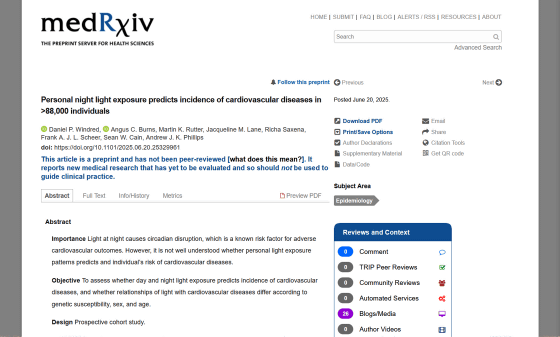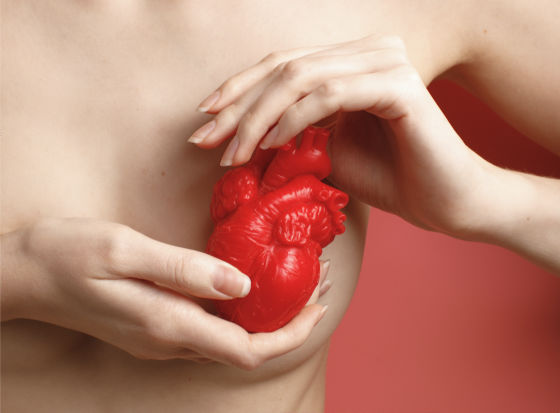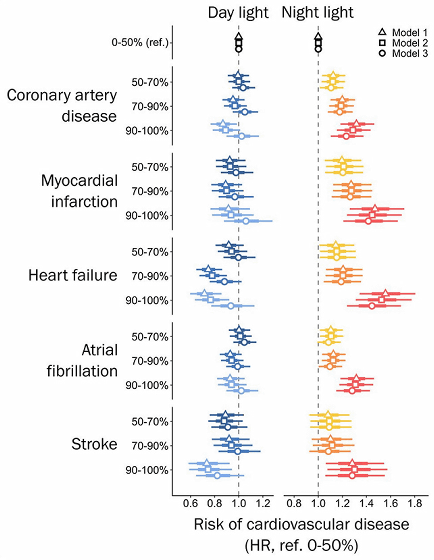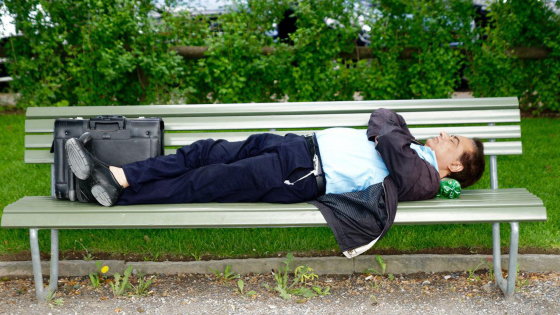Research shows that people who are exposed to a lot of light at night are at higher risk of myocardial infarction and stroke

Since the human
Personal night light exposure predicts incidence of cardiovascular diseases in >88,000 individuals | medRxiv
https://www.medrxiv.org/content/10.1101/2025.06.20.25329961v1

Big City Lights Could Be Damaging Your Heart Health : ScienceAlert
https://www.sciencealert.com/big-city-lights-could-be-damaging-your-heart-health
An international research team from Australia and the UK analyzed data from 88,905 adults aged 40 and over collected by the UK National Health Service to test the hypothesis that exposure to light at night may disrupt circadian rhythms and increase the risk of cardiovascular disease.
The data included light exposure over a week, as measured by a light-detecting sensor worn on the wrist, and whether the participants developed any cardiovascular events, including coronary artery disease, myocardial infarction, heart failure, atrial fibrillation or stroke, over a 9.5-year follow-up period.

The research team divided the subjects into groups according to the amount of light they were exposed to at night and investigated the association with the risk of cardiovascular disease. The results showed that the top 10% of subjects with the most light exposure at night had a significantly higher risk of cardiovascular disease compared with the bottom 50%.
The association between nighttime light exposure and risk of cardiovascular disease was confirmed even after taking into account factors known to be associated with cardiovascular disease risk, such as smoking, alcohol intake, diet, sleep duration, physical activity, socioeconomic status, and genetic risk. In addition, the research team stated in the paper, 'The association between nighttime light exposure and risk of heart failure and coronary artery disease was stronger in women, and the risk of heart failure and atrial fibrillation was stronger in younger people.'
The graph below shows the risk of coronary artery disease, myocardial infarction, heart failure, atrial fibrillation, and stroke for each amount of light exposure during the day (left) and night (right), with 1.0 as the standard. Overall, the top 10% of people who were exposed to the most light at night tended to have a higher risk of cardiovascular disease.

The research team pointed out that many functions in the human body, including blood pressure, blood glucose tolerance, and even hypercoagulability , depend on a regular circadian rhythm, and they believe that disrupting circadian rhythms through staying up late or working night shifts may increase cardiovascular risk.
Please note that this paper has only been published on a preprint server and has not passed formal peer review. Also, the results of the study do not prove a direct causal relationship, but merely show an association.
Related Posts:
in Science, Posted by log1h_ik







